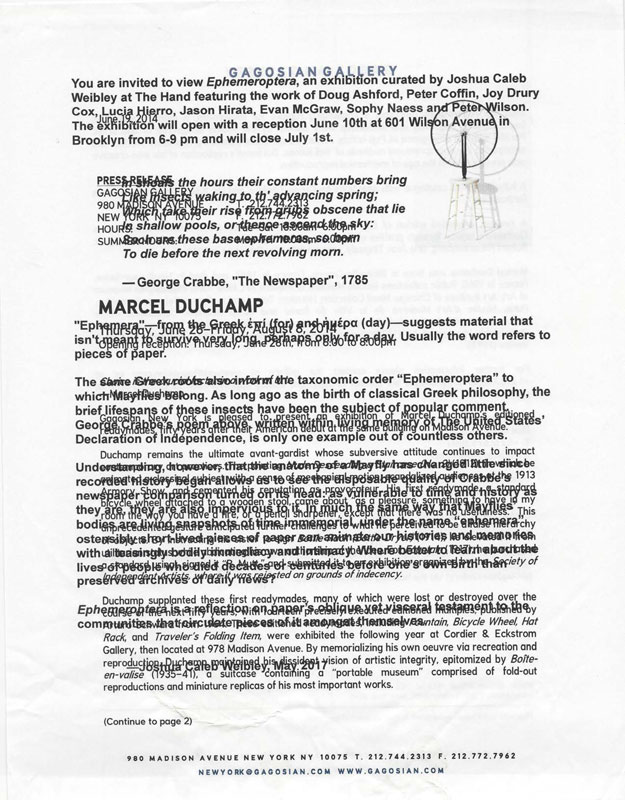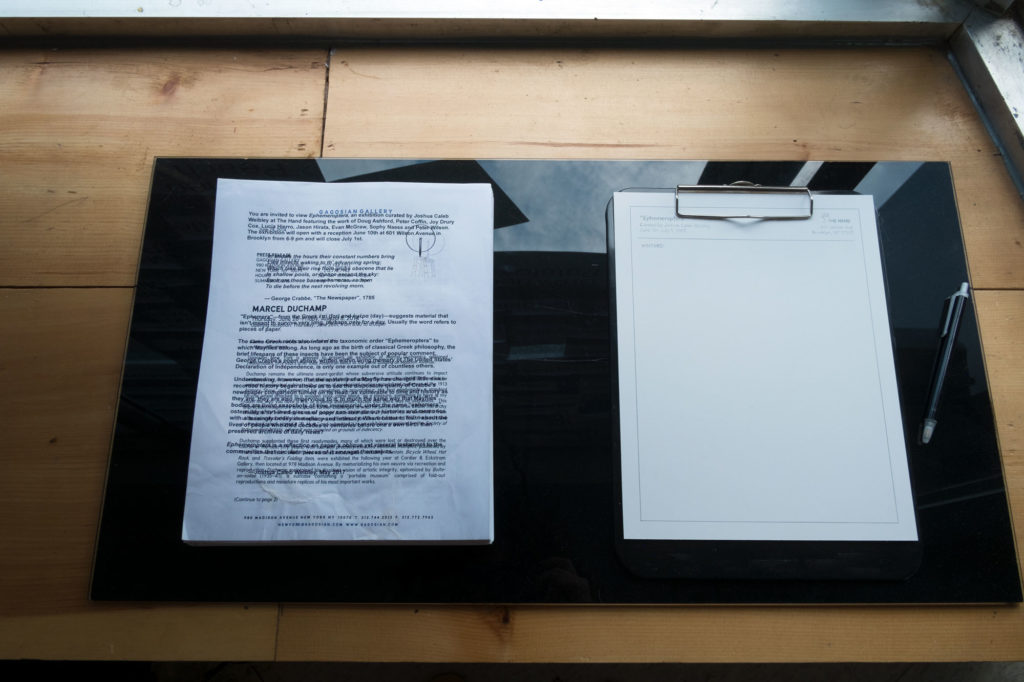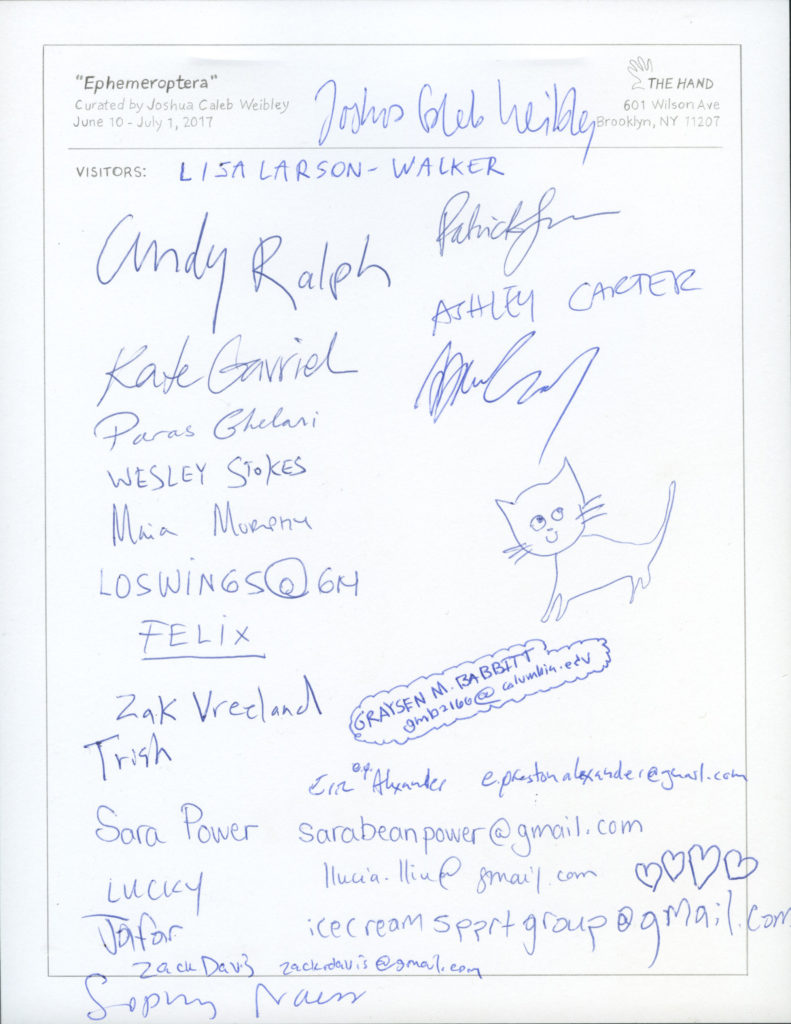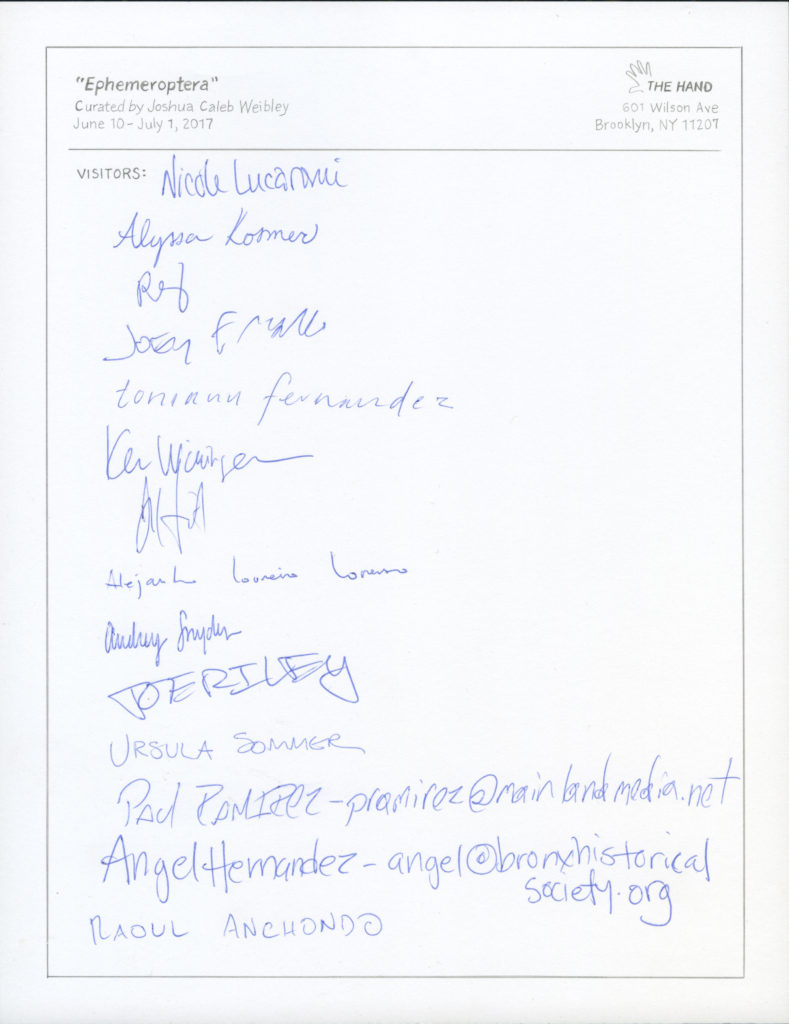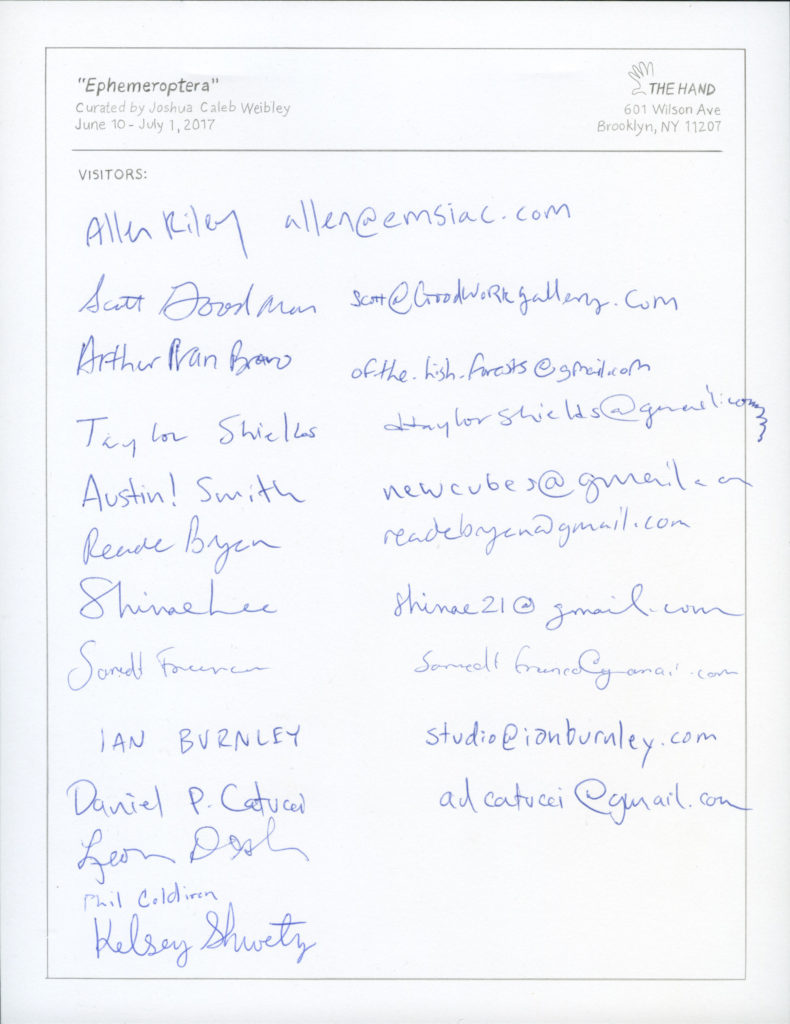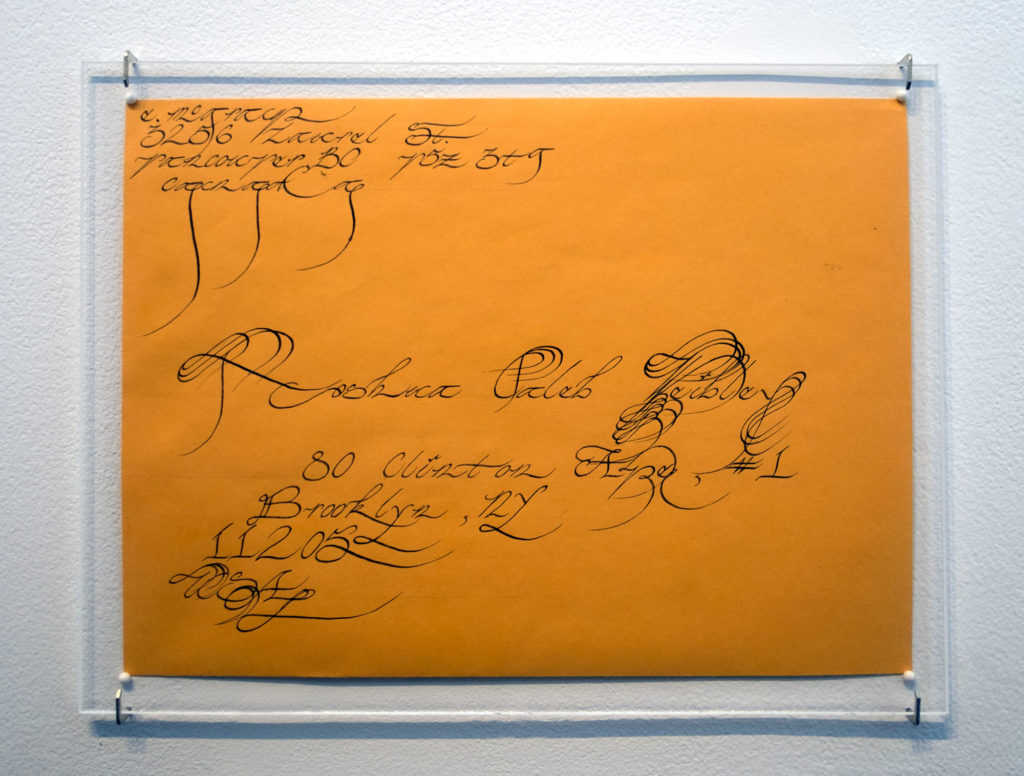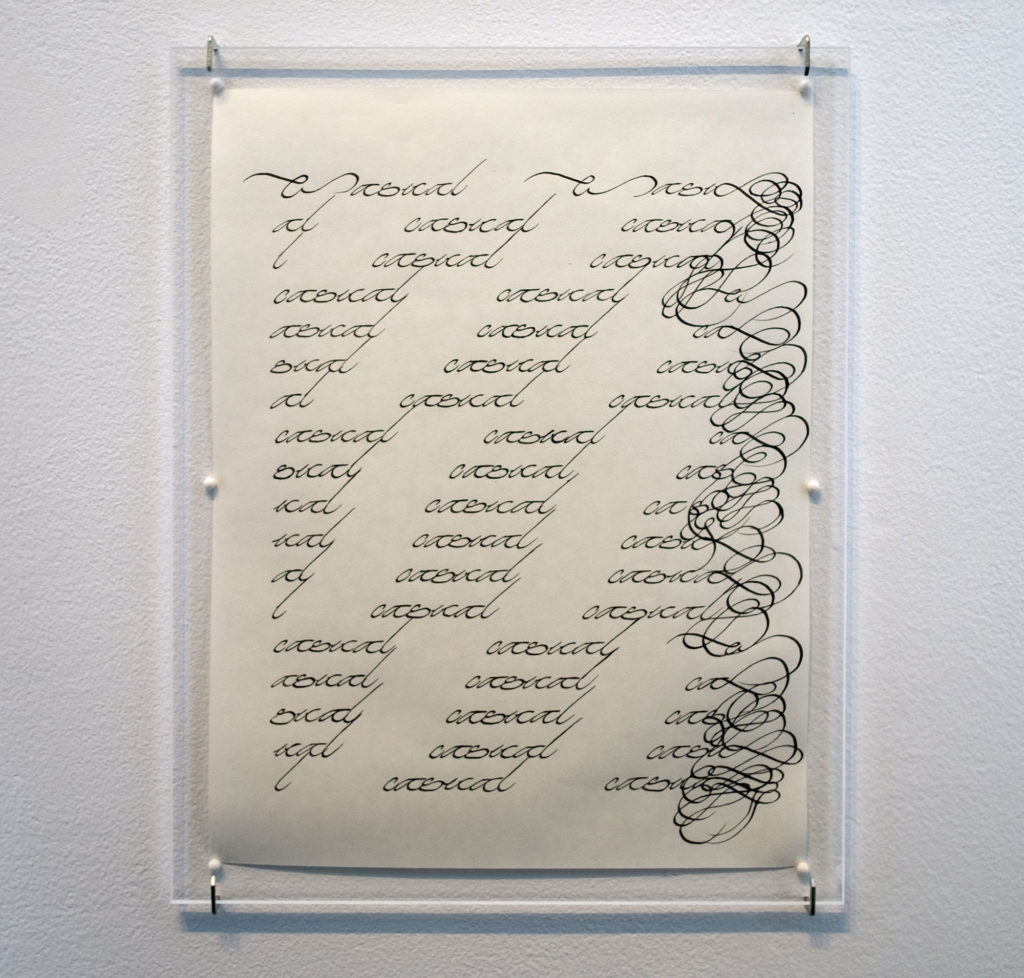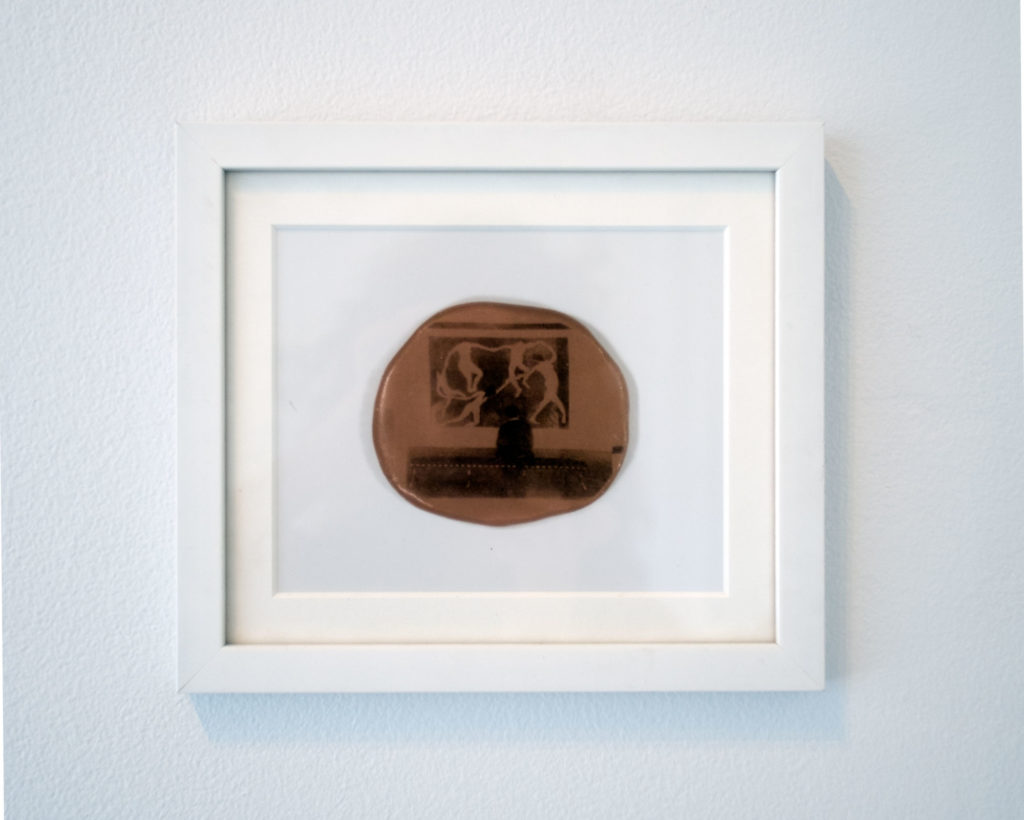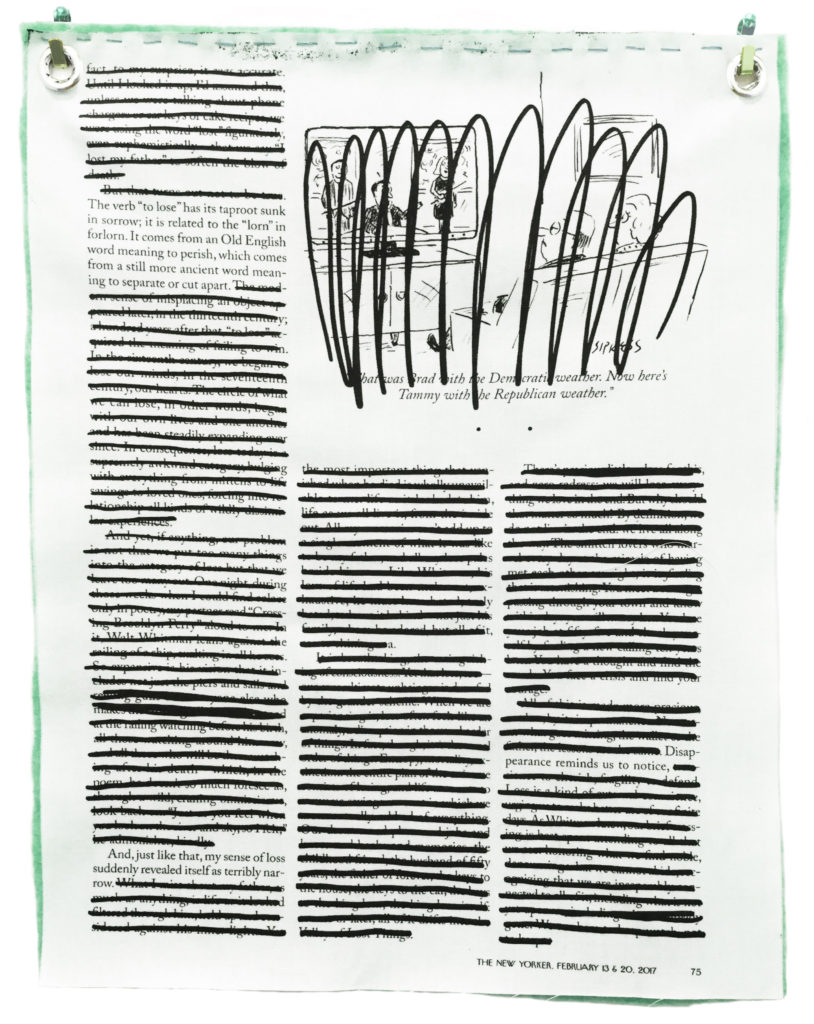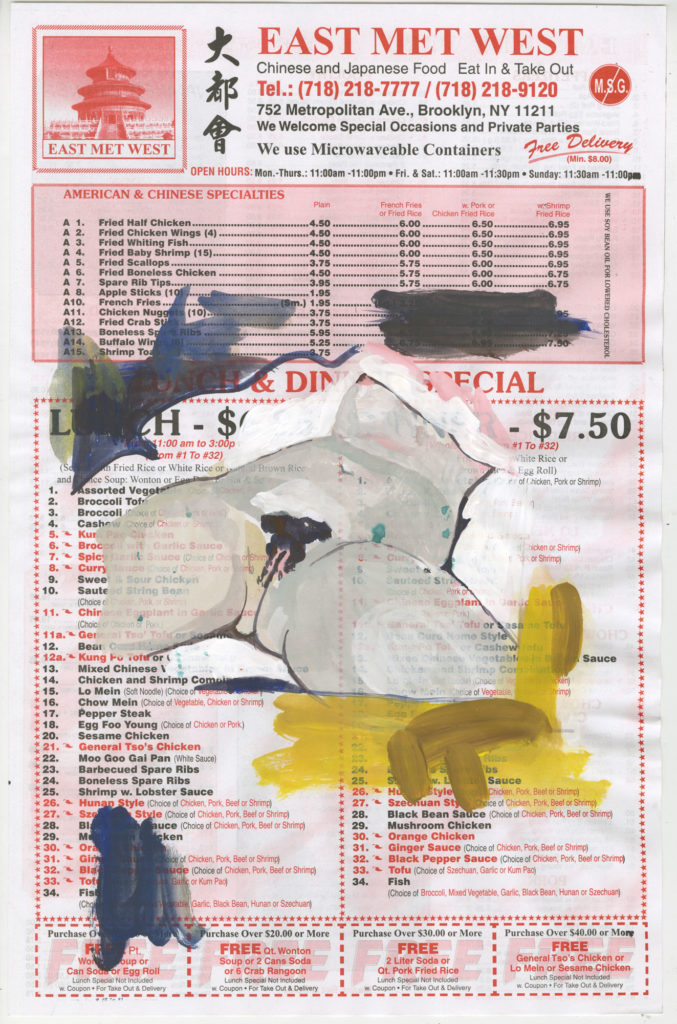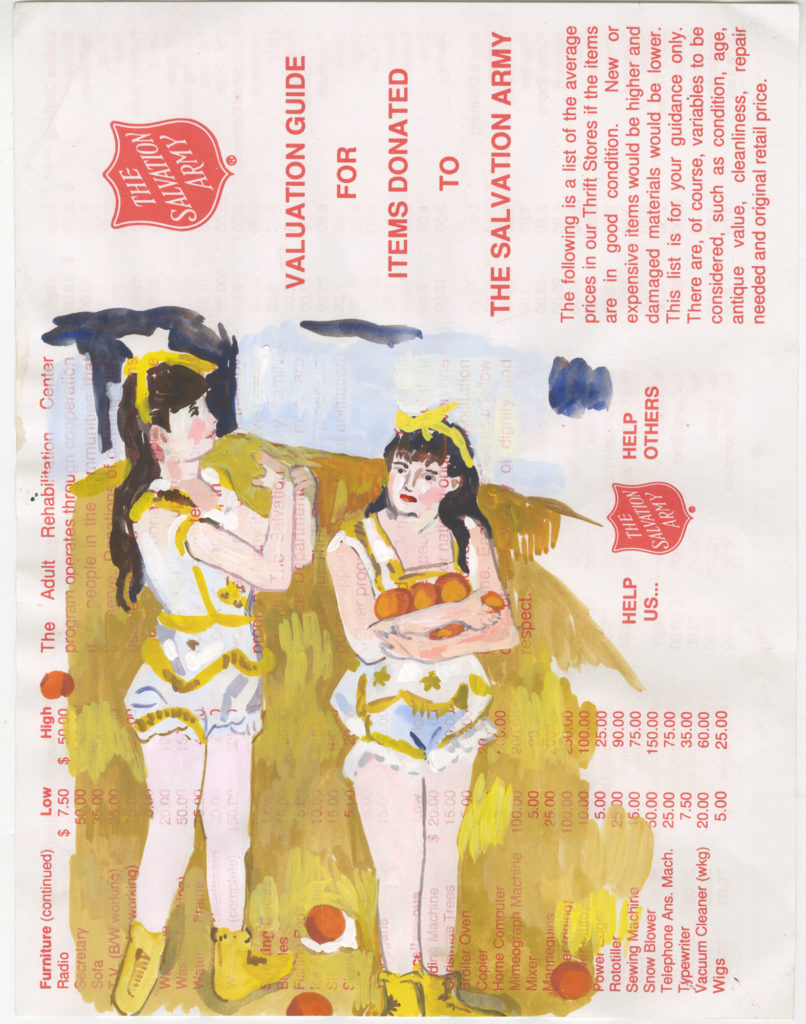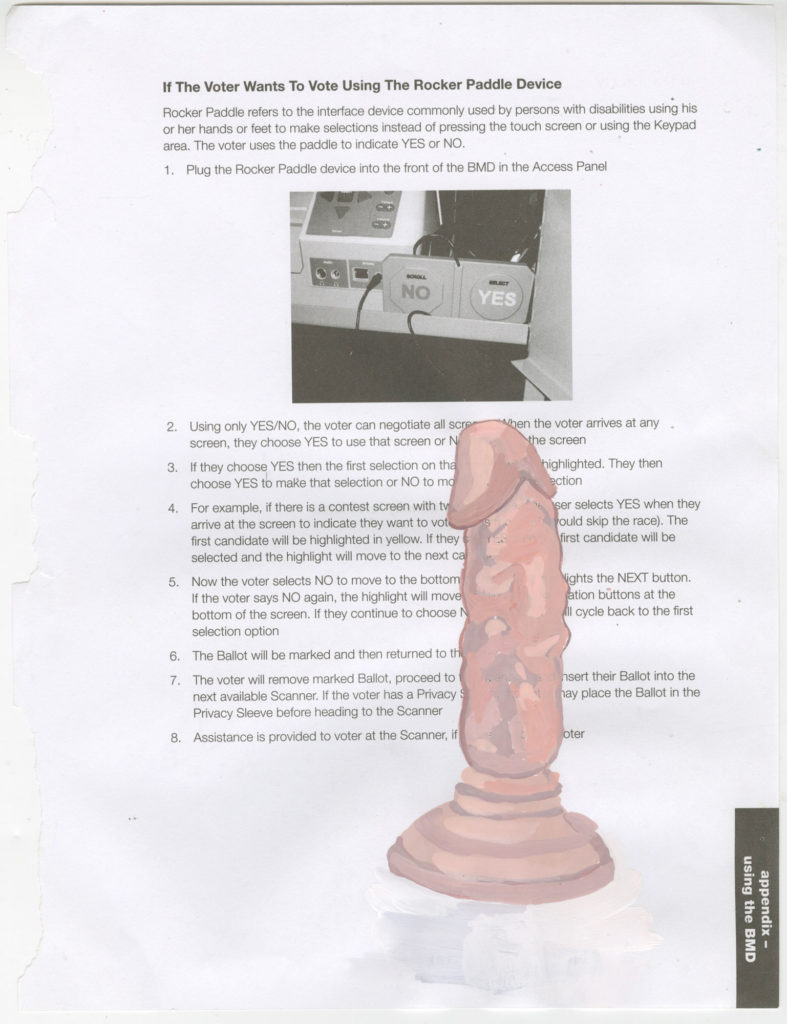
Including works by: Doug Ashford, Peter Coffin, Joy Drury Cox, Lucia Hierro, Jason Hirata, Evan McGraw, Sophy Naess and Peter Wilson.
“Ephemera”—from the Greek ἐπί (for) and ἡμέρα (day)—suggests material that isn’t meant to survive very long, perhaps only for a day. Usually the word refers to pieces of paper.
The same Greek roots also inform the taxonomic order “Ephemeroptera” to which Mayflies belong. As long ago as the birth of classical Greek philosophy, the brief lifespans of these insects have been the subject of popular comment. George Crabbe’s poem above, written within living memory of The United States’ Declaration of Independence, is only one example out of countless others.
Understanding, however, that the anatomy of a Mayfly has changed little since recorded history began allows us to see the disposable quality of Crabbe’s newspaper comparison turned on its head: as vulnerable to time and history as they are, they are also impervious to it. In much the same way that Mayflies’ bodies are living snapshots of time immemorial, under the name “ephemera”, ostensibly short-lived pieces of paper can animate our histories and memories with a teasingly bodily immediacy and intimacy. Where better to learn about the lives of people who died decades or centuries before one’s own birth than preserved archives of daily news?
Ephemeroptera is a reflection on paper’s oblique yet visceral testament to the communities that circulate pieces of it amongst themselves.
—Joshua Caleb Weibley, May 2017
